September 5, 2024
By: Aaron Halls
Thriving Together Action Session: Strategies to enhance psychological safety
On August 15, YW Boston hosted an in-person action session as part of Thriving Together: Building a Resilient Work Culture During Contentious Times, YW Boston’s latest initiative aimed at helping employers build a supportive workplace culture that empowers employees to navigate and thrive despite external pressures and internal conflicts—all through a diversity, equity, and inclusion (DEI) lens. Facilitated by Samantha Isabel Calero (VP of People & Culture, YW Boston) and Kim Dukes (Managing Director, Koya Partners), the event gathered HR/DEI professionals to strategize how to enhance psychological safety in everyone’s workplace during tumultuous times, especially when staff members have different lived experiences that can show up in both large and small ways.
Through the action session participants were left with a foundation to build a work environment that truly thrives within psychological safety and inclusivity. Here are some key take aways from the session that HR/DEI professionals can bring back to their organizations:
Organizational DEI Journey
As organizations aim to foster a psychologically safe and inclusive work environment, they can be at different stages of their organizational DEI journey. This can range from being exclusive or passive, where they might intentionally avoid issues, to going about structural change and becoming fully inclusive. Through this process it’s important to know that an organization’s journey is non-linear, which is a natural part of growth. With this point raised, the question for HR/DEI leaders in an organization is how to keep everything moving forward while building community and support.
Psychological Safety, The Window of Tolerance, and Self-and Collective Care
When thinking of psychological safety in a professional setting there are various internal or external environmental factors, such as the upcoming election, that can affect one’s psychological state. A tool to engage with or reflect on one’s own state is the “window of tolerance.” If someone is within their window of tolerance their thinking and feeling is balanced; they’re able to engage authentically and process complex information. If that same person experiences a hard conversation, microaggression at the workplace, or another stressor, they might drop to a lower threshold out of their window of tolerance causing them to become “checked-out,” look at their phones, or feel spaced out. Alternatively, they might rise out of their window of tolerance causing them to experience anxiety or shift into a state of fight-or-flight.
In considering psychological safety in the workplace, HR/DEI professionals and leaders have a chance to take note of their own window of tolerance in addition to that of their co-workers. With this parallel process of self- and collective care they can better provide resources for staff members, facilitators, and participants to help them stay in their window of tolerance and support a psychologically safe environment during contentious or distressing times. This could be with physical or mental grounding techniques such as fidget toys or affirmations/positive self-talk, or openly encouraging staff to take breaks or check in with trusted colleagues.
Collective Action Steps
In addition to the takeaways above, participants in the Thriving Together Action Session broke out into collaborative action planning groups aimed at addressing common themes and challenges amongst HR and DEI professionals. They first conducted SWOT (Strengths, Weaknesses, Opportunities, and Threats) analyses for their respective organizations then gathered in small groups based on common themes and challenges. Each group presented the following solutions:
ERGs (Employee Resource Groups)
To enhance the effectiveness of ERGs, consider bringing in external resources, soliciting feedback, and intentionally creating space for individuals to lead initiatives. Additionally, forming a resource committee instead of relying on co-chairs and setting up a resource table at events can help recruit members for ERGs.
Policy
When addressing policy, it’s crucial to incorporate equity as a central consideration in decision-making. Define what equity means to your organization so that it can be closely aligned with your mission and values. Build trust through actionable steps, ensuring that staff believes HR and DEI leaders will follow through on their commitments. Effective communication and rollout are essential, along with securing buy-in at all levels. Staff should understand how the policy connects to them both as individuals and as part of the larger organization, reinforcing their support for equity initiatives.
Preparing Leaders
To prepare leaders effectively, focus on education around microaggressions and bias. Encourage leaders to conduct self-assessments, reflecting on their biases and approach when engaging in conversations. Create spaces where leaders can practice being authentic, hold room for grace, and understand the importance of saying “I’m sorry” when mistakes are made.
Who are we trying to make comfortable?
When considering the question of comfort, it’s important to embrace discomfort and work towards a common understanding of humanity. Foster open conversations about real issues, identify other “champions” within the organization, and provide resources that people can leverage.
Accountability
To foster a culture of accountability, establish a shared understanding of comfort, messaging, and awareness. Ensure that your approach is data-centered, utilizing both qualitative and quantitative metrics. Finally, prioritize by setting clear expectations.
Developing an Actionable Plan
The conversations and strategies that arose at the Thriving Together Action Session highlighted some essential strategies for DEI and HR leaders to foster more psychologically safe and inclusive workplaces. Through a deepened understanding where an organization is in its DEI journey, the importance of psychological safety, and tools like the “window of tolerance,” leaders can help manage stress and maintain balance. By focusing in on specific pain points and themes like investment in ERGs, thoughtful policymaking, leadership preparation, and the need to challenge comfort zones for meaningful progress, it becomes easier to develop actionable plans to address common challenges, ultimately contributing to more resilient and supportive work environments.
Thank you to our facilitators for lending their time and expertise and the HR/DEI professionals who attended and contributed with thoughtful discussion.
_____________________
This in-person event is part of “Thriving Together: Building a Resilient Work Culture During Contentious Times,” an initiative dedicated to helping employers build a supportive workplace culture that empowers employees to navigate and thrive despite external pressures and internal conflicts—all through a DEI lens. Make sure to stay connected with us to receive guides, toolkits, and online resources that provide practical advice for fostering an inclusive and supportive work culture during tumultuous times.

